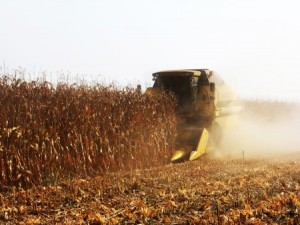WOOSTER, Ohio — Corn residue left over from harvesting can make an excellent source of supplemental feed for livestock, according to a forage expert from the College of Food, Agricultural, and Environmental Sciences at The Ohio State University.
This is especially true for producers who are facing lower hay crop inventories thanks to the excessive rains that impacted the region during the beginning of the growing season this year, said Rory Lewandowski, agriculture and natural resources educator for the college’s outreach arm, Ohio State University Extension.
Grazing cows on harvested corn acres within the first 30 to 60 days after harvesting can be a great way for producers to stretch their feed supplies, he said.
“This was a tough forage year for many livestock producers,” Lewandowski said. “Many producers are finding that they didn’t get enough hay harvested with all the rain that impacted the crops during the earlier part of the growing season.”
For growers looking for a way to extend their forage supplies, grazing corn residue may be one less-expensive option, he said.
“For some folks that may be scrambling for alternatives, such as buying extra hay or feeding more grain to their livestock, grazing corn residue is a good option,” he said. “Using temporary fencing allows this as an inexpensive option for many producers.”
Based on calculations by Rick Rasby, a beef specialist at the University of Nebraska, for every bushel of corn there are about 45 pounds of residue on a dry matter (DM) basis, Lewandowski said.
And for every bushel of corn there are about 16 pounds of husks and leaves on a dry matter basis, he said.
“Using those figures, a 170 bushels per acre corn crop will leave 7,650 pounds of dry matter of total residue, with the husks and leaves accounting for about 2,720 pounds of that total,” he said. “And typical harvest leaves about one bushel per acre of corn grain that the animals can graze.”
Cows in mid-gestation and ewes in the middle trimester or earlier of gestation typically do well with grazing corn residue, Lewandowski said.
Rory Lewandowski
330-264-8722
lewandowski.11@osu.edu

